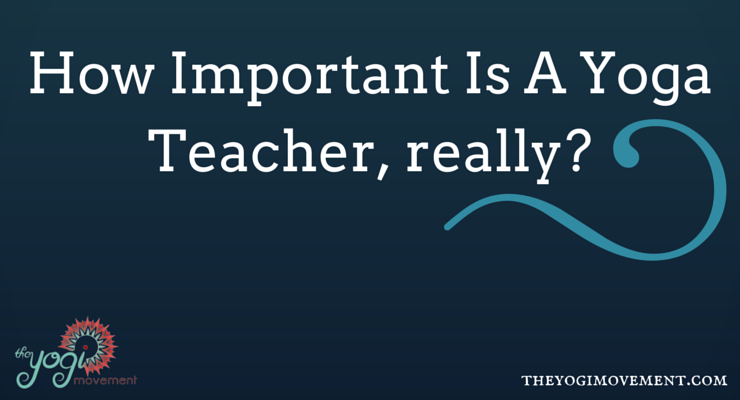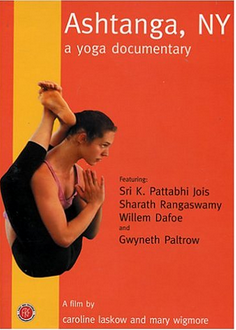Yes and No, and by that I mean yes. I mean that in the least confusing way possible.
It’s so easy to question your teacher – especially with SO many different styles of yoga, SO many different teachers, and SO many different perspectives.
Not to mention all of the ego’s floating around out there!
This doesn’t have to be confusing. People love to make things more complicated than they are, and it’s actually really simple.
Ashtanga Yoga has a tradition called the Parampara (Source: Krisha Pattabhi Jois Ashtanga Yoga Institute):
Parampara is knowledge that is passed in succession from teacher to student. It is a Sanskrit word that denotes the principle of transmitting knowledge in its most valuable form; knowledge based on direct and practical experience. It is the basis of any lineage: the teacher and student form the links in the chain of instruction that has been passed down for thousands of years. In order for yoga instruction to be effective, true and complete, it should come from within parampara.
Knowledge can be transferred only after the student has spent many years with an experienced guru, a teacher to whom he has completely surrendered in body, mind, speech and inner being. Only then is he fit to receive knowledge. This transfer from teacher to student is parampara.
The dharma, or duty, of the student is to practice diligently and to strive to understand the teachings of the guru. The perfection of knowledge – and of yoga — lies beyond simply mastering the practice; knowledge grows from the mutual love and respect between student and teacher, a relationship that can only be cultivated over time.
The practice of Ashtanga Vinyasa Yoga is a deep and internal spiritual study, so your ashtanga teacher is so much more than just a teacher of postures (but that’s a whole other post!).
I’ve gone back and forth with studying with one teacher, then studying with many as I was searching. I even questioned if I really needed a teacher at all. What I’ve found is the more I move away from my teacher, the more I crave tradition and consistency.
Here’s what I mean by yes and no.
Yes, you always need a teacher. The student-teacher relationship is extremely important, and I learned this from personal experience.
- A teacher is able to see things in you that you may not see in yourself.
- A teacher can guide you in and out of postures and help deepen your practice.
- A teacher will notice your strengths and weaknesses and help you to create balance.
- A teacher knows when you’re ready to move on to new postures. (This is where the ego gets involved, and people start to walk away. There will always be postures you can do that are beyond the one you’re working on. Ashtanga does not work in a way where the postures get more and more advanced each time. It’s like a wave that fluctuates. The more postures you have does NOT equal more advanced. Progress is mindset and attitude. As long as your teacher has good intentions & is not policing, trust that your teacher has you where you are for a reason.)
- Surrendering to a teacher will help you grow because you’ll work with non attachment, letting go of ego, humility, and acceptance.
The NO version: You should have someone you call your teacher, but you don’t always have to work with that teacher. You have the freedom to work alone and explore other teachers. Here’s why working on your own & exploring is important:
- You’ll learn the most about your mind and your body by listening to what’s going on in your practice. A teacher helps to guide you, but your real teacher IS your practice.
- Practicing on your own, outside of a studio with others, helps you to hold yourself accountable. When you don’t have someone telling you what to do, or the energy and competition of people around you, you will have to make yourself get to the mat and challenge yourself on your own.
- Exploring other teachers is helpful. You might learn something new that changes aspects of how you practice. It’s also interesting to learn the history by working with senior teachers who were taught at different times. However, your teacher is your teacher. This doesn’t change your teacher or your practice.
I needed to accept my teacher. I had some trouble letting go of my ego, and I was having too many conversations with others about it rather than just listening to my own guide within. Once I was able to tune in, the practice started to flow into my heart, and everything became lighter.
I don’t always see my teacher, but I check in when I can. Trusting in the student-teacher relationship has helped me grow. The more I learn and grow, the more sacred I hold this relationship.
Are there times when you should change teachers, or qualities to look for in a bad or good teacher? Of course. But that’s for another time.
“Trust is a choice. So many students come to an uncomfortable place in their relationship with their Teacher and leave … go find the answer they want and miss the lesson they need.” – David Garrigues
Choose one teacher – and let go.
Here’s your homework!
Learn more about Ashtanga Yoga and the Parampara tradition by watching Ashtanga Yoga New York. It’s a really moving Documentary where Pattabhi Jois visits New York to do a workshop, and the September 11th terrorist attacks happen while this was all going on. Gweneth Paltrow and Willem Dafoe discuss their experience with Ashtanga, which is really interesting! Click Here to learn more!
In the comments below…
Tell me if you’ve ever struggled with having a yoga teacher. Have you found your teacher? Have you had a bad teacher? What’s your experience?


Leave a Reply